#Barrier Films
Explore tagged Tumblr posts
Text
The Plastic Films Market is experiencing rapid growth driven by rising e-commerce
The plastic films market enjoys widespread applications across various end-use industries such as packaging, agriculture, construction, and electrical & electronics. Plastic films offer several advantages over traditional materials including moisture barrier properties, durability, lightweight and transparency. They are extensively used for flexible packaging of food products, beverages, consumer goods and industrial applications. The growth of e-commerce and online shopping has propelled demand for plastic films from the packaging sector. The Global Plastic Films Market is estimated to be valued at US$157.5 billion in 2024 and is expected to exhibit a CAGR of 7.2% over the forecast period 2024 to 2031. Key Takeaways Key players operating in the plastic films market are Amcor plc, Berry Global Group, Sealed Air Corporation, DuPont, Toray Industries, Jindal Poly Films, RPC Group, and DS Smith. They collectively account for over 30% share of the global market. The Plastic Films Market Demand has been witnessing strong growth globally driven by the expanding food & beverage industry and burgeoning e-commerce sector. Especially in Asia Pacific, growth in the standard of living has boosted consumption of packaged foods and beverages, thereby augmenting plastic films usage. The plastic films market is extending its footprint globally on account of rising export activities from leading producers based in Asia Pacific and Europe. Many developing countries in South America, Middle East & Africa and Asia are emerging as lucrative markets providing ample opportunities for plastic film manufacturers. Market Key Trends One of the key trends gaining momentum in the plastic films market is the increasing replacement of conventional plastics with bioplastics. Bioplastic films made from renewable sources such as cellulose, starch, polylactic acid and polyhydroxyalkanoates offer superior compostability and sustainability. The development of bio-based barrier films, shrink films and stretch films with properties comparable to petroleum-based films will further bolster the adoption of bioplastics in food packaging and other applications over the forecast period.
Porter's Analysis Threat of new entrants: Low capital required for manufacturing plants enables easy entry which increases competition in the market. Bargaining power of buyers: Large number of suppliers in the market gives buyers more options but commodity nature of products limits their power. Bargaining power of suppliers: Major suppliers have established relationships with end-use industry players reducing their individual bargaining power. Threat of new substitutes: Availability of alternative materials like paper and aluminum foils poses threat of substitution to plastic films. Competitive rivalry: Large number of global and regional players operate in a price-sensitive market increasing competition. Geographical Regions North America accounts for the largest share of the plastic films market owing to high demand from various end-use industries like packaging, personal care, construction and others in United States and Canada. Asia Pacific region is expected to grow at the fastest rate during the forecast period due to rapid industrialization and infrastructure development activities in major economies like China and India increasing consumption of plastic films in packaging, agriculture and construction applications.
Get more insights on Plastic Films Market
For Enhanced Understanding, Dive into the Report in the Language that Connects with You.
French
German
Italian
Russian
Japanese
Chinese
Korean
Portuguese
About Author:
Money Singh is a seasoned content writer with over four years of experience in the market research sector. Her expertise spans various industries, including food and beverages, biotechnology, chemical and materials, defense and aerospace, consumer goods, etc. (https://www.linkedin.com/in/money-singh-590844163)

#Coherent Market Insights#Plastic Films Market#Plastic Films#Flexible Packaging#Polymer Films#Polyethylene Film#Polypropylene Film#Plastic Packaging#Industrial Films#Barrier Films#Shrink Films#Stretch Films#Laminated Films
0 notes
Text



Nezha has me in a stranglehold
the gay mythology Chinese boys are dragging me out of art slump, so have some quick sketches of Nezha & Ao Bing
(psST go see movies!!!)
~~
PLEASE DO NOT REPOST, EDIT, TRANSLATE, OR OTHERWISE USE MY ART. To share, please reblog! Reblogs and comments greatly appreciated!!!
❀ You can see the rest of my art through the Masterpost pinned to the top of my blog!
#Nezha#ao bing#ne zha#nezha 2#nezha 2025#YukiPri art#artists on Tumblr#also help i know it's the less mainstream ship direction but i think i fell for Bingzha more than Oubing...#both are good BUT one I'm feelin a lot more#first public art post in forever lmao#ANYWAY u can watch movie 1 for free on youtube#and movie 2 is currently in theaters in the US as of making this post#and look I adored movie 1 I thought it was adorable and beautiful#but movie 2 BLEW MY MIND and may in fact be my favorite 3D animated film ever#it is STUNNING the story the visuals the character arcs the relationships the character designs the comedy the action the emotions#i've seen it 3 times so far and am seeing it a 4th time this week and more if i can#plz go see it u will not regret#don't let the chinese intimidate you#once you overcome the one inch tall barrier of subtitles MAN#sorry this movie just came outa NOWHERE and KO'd my heart lmao
250 notes
·
View notes
Text
Ever since watching One Piece Film Red, I kept on hyperfixating about the red spots on Law's outfit--like just looking at it for no reason whatsoever--until Luffy was on the same frame with him and something in my idle brain suddenly clicked: their outfits were a mix of red and yellow, which is their respective colors.
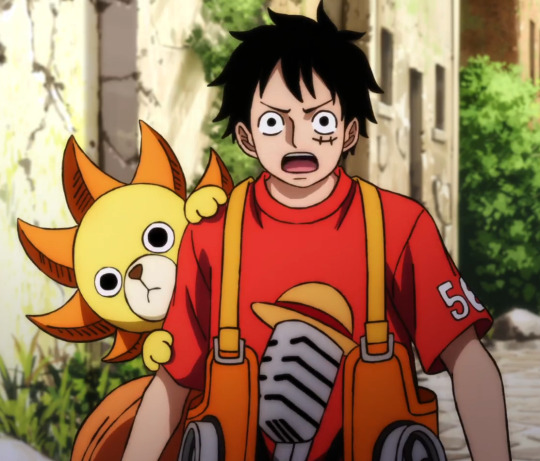

#it's just a cute detail okay lol#the funniest lawlu moment in op film red has got to be luffy inside barto's barrier and law pushing said barrier like a boulder LMAO#forcibly putting luffy in a time out TWICE LMAO#and yes those spots are red I checked with a color picker online#color hex code is f34850 if y'all are curious!!!#one piece#lawlu#monkey d luffy#trafalgar law#luffy#law#hoping I will see both of them in casual fits because they look so good
207 notes
·
View notes
Text




Jerzy Skolimowski - Barrier (1966)
166 notes
·
View notes
Text
my absolute favorite part of season six is cobra kai trying to sell us the back of the catedral de barcelona as a sketchy area. “tourists don’t really come here.” babygirl it's in the middle of barri gòtic, you can't breathe for tourists. there's five museums within spitting distance. my wool store is around the corner. crying
#making a movie set in new york and letting the cab driver say 'are you sure it's the right address? tourists dont really come here'#and the camera pans out and it's just times square with zero people#funniest fucking choice they could have made. they were like yes. baixada de santa clara. no tourist has been here ever#the five thousand tourists watching from behind the 'sorry we're filming' barriers: 🧍♂️🧍♂️🧍♂️🧍♂️🧍♂️🧍♂️#this show got me barcelonaposting again. not sorry in the slightest.#cobra kai#ck spoilers
54 notes
·
View notes
Text



RED, WHITE & ROYAL BLUE (2023) dir. Matthew Lopez
And he did. He made a supersonic man out of Alex! Or maybe Alex was like, Tag Me In! This has me weeping.
#red white and royal blue#firstprince#rwrb movie#rwrb#taylor zakhar perez#nicholas galitzine#henry x alex#red white royal blue#rwrb film#supersonic man#I'll break the sound barrier for you
455 notes
·
View notes
Text

Welcome to 2024 A.D. Detail from the poster for Beyond the Time Barrier, 1960.
381 notes
·
View notes
Text
TIFF: And so it continues...5 to ZFF

Aaand "Russians at War" is going to be at the Zurich Flim Festival. Because of course.

The Russian Canadian director Anastasia Trofimova met a soldier on home leave in Moscow's subway, accompanying him to the front lines, where she spent over a year filming unauthorized footage in a battalion near the Ukrainian border. In her film, she gives voice to soldiers who have no understanding of the war's causes and soon find themselves mourning comrades who have become Putin's cannon fodder. This harrowing and unique war documentary captures images you would never see in the news media. 'Who are the Russian soldiers who are fighting against Ukraine? What do they think of Putin? The documentary has them speak their minds. A film that revealed more to me about this conflict than 100 newspaper articles.' – Christian Jungen Anastasia Trofimova Anastasia Trofimova was born in Moscow and is a Russian-Canadian filmmaker. She first studied communications and political science and then international relations. Trofimova is a renowned filmmaker who has made a name for herself through her work in conflict zones such as Iraq, Syria, Lebanon, Russia and the Democratic Republic of Congo. In her films, she addresses social inequality and injustice. She has been honoured with the Canada Screen Award and has participated as a jury member at the News and Documentary Emmy Awards five times. RUSSIANS AT WAR (2024) / CONGO, MY PRECIOUS (2017) / VICTIMS OF ISIS (2015) / HER WAR: WOMEN VS. ISIS (2015)
No mention of RT in the director's bio of course. Same shit, different film festival.
Also, if this propaganda film reveals more to you about the war than 100 news articles, that's not shining praise for the film, but rather an indictment of the sorry state of our collective media landscape in Ukraine and the West.
The West obviously has a problem of not reporting on Ukraine as often anymore. It's not "fashionable". A lot of the reporting I've come across is superficial and there is rarely a deep dive into the Ukrainian civilian aspect of the war. It seems there always has to be either a grotesque catastrophic event due to Russian aggression (like the Okhmatdyt children's cancer hospital), or an interesting enough topic in order for something to be considered (like the Mykola Hryshko national botanical garden being in danger of losing its tropical plants due to the war causing electricity cuts.) There is a dearth of human interest stories, which is the core of understanding this war and the effects it has on Ukrainians.
When there is such a story, it falls into the situation of the "box-ticking approach", as described by Dr. Olesya Khromeychuk:
It is not enough to simply ‘do Ukraine’ by reviewing one book on the war, especially if it’s by a Western journalist rather than a Ukraine-based author. It’s not enough to host one exhibition, particularly if it is by an artist or photographer who only spent a few weeks in the country. Quickly putting together a panel on Russia’s war in response to a major development at the front and adding a sole Ukrainian voice at the last minute doesn’t cut it either. This box-ticking approach is unhelpful and insulting.
Most if not all of the quotes I pull from human-interest stories are from Ukrainian journalism. If you've been following me for the short time I've had this blog up, you'll notice I read a lot. At this point I've given up on looking up Western based English media, because the core stories that define the war are just not there. If there is an interesting article from the West, I'll usually see it pop up on my Twitter feed (like the botanical garden story) and I'll take a look then because its been recommended and has what I'm looking for.
And finally, Western media can't let go of having some Russian expert talk about Ukraine, instead of actually talking to Ukrainians.

Kate from Kharkiv: Ukrainian media, both in Ukrainian and English, must improve their regional reporting. They are increasingly resembling local Kyiv media, which limits global awareness of events across Ukraine. Consequently, international media rarely cover these regions unless we die en mass. But not too often, because if often it is not news anymore.
Like Kate from Kharkiv points out, mass-casualty events are no longer "fashionable". She further indicates the lack of essential reporting in specific regions where conditions are different from Kyiv. One such example is the Russians turning Kherson into a "human safari". Initially, only Zarina Zabrisky was reporting on how Russian drones pilots were deliberately targeting civilians, and she shouldn't have to be the only one reporting on this. While there are some Western news outlets that have reported on this situation now, it's still not enough. Zarina Zabrisky is still diligently doing the bulk of the work in reporting on this. I can only imagine what other stories in other regions are going untold because there is little to no coverage.
The other obstacle I've noticed is accessibility to news in Ukraine from a language perspective. There isn't enough English language coverage from Ukrainian media outlets. While I would love to be able to read Ukrainian confidently, I'm nowhere near there yet, and the West is collectively even further away. Google translate isn't a great substitute either for obvious reasons. The number of times I wanted to read/watch a news report, and there was no English supplement is a lot. It happens frequently with the English language Ukrainian news accounts I follow. They'll post a clip from a news report with no translated subtitles and say, "look at this!", but I can't extract the information they want to show because of this problem.
This is why I hold volunteer translators as some of the most valuable contributors in the information space, and I will always credit them.
It's a vicious cycle. If a large proportion of Ukrainian news media is inaccessible to Western media due to the language barrier, information has even less of a chance of being noticed and spreading. This is, in my opinion, the other side of the coin on issues in the information war.
#Ukraine#Zurich#Switzerland#russians at war#Russian propaganda#screen reader friendly#Zurich Film festival#ZFF#media#journalism#Ukrainian journalism#language barrier#long post#Kate from Kharkiv#Zarina Zabrisky
59 notes
·
View notes
Text
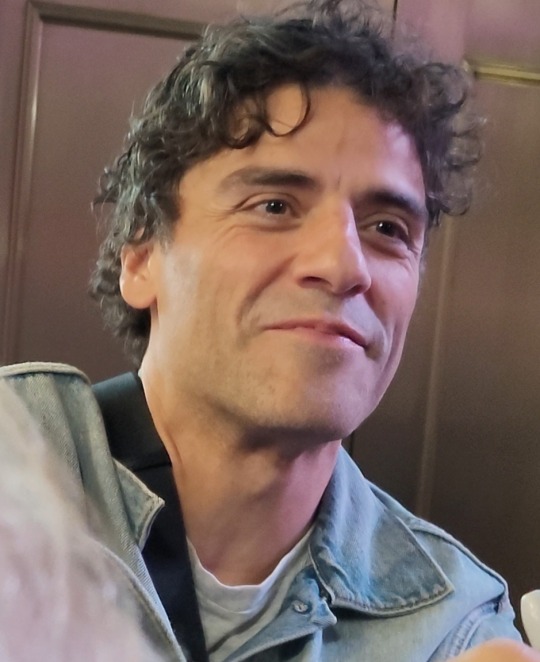
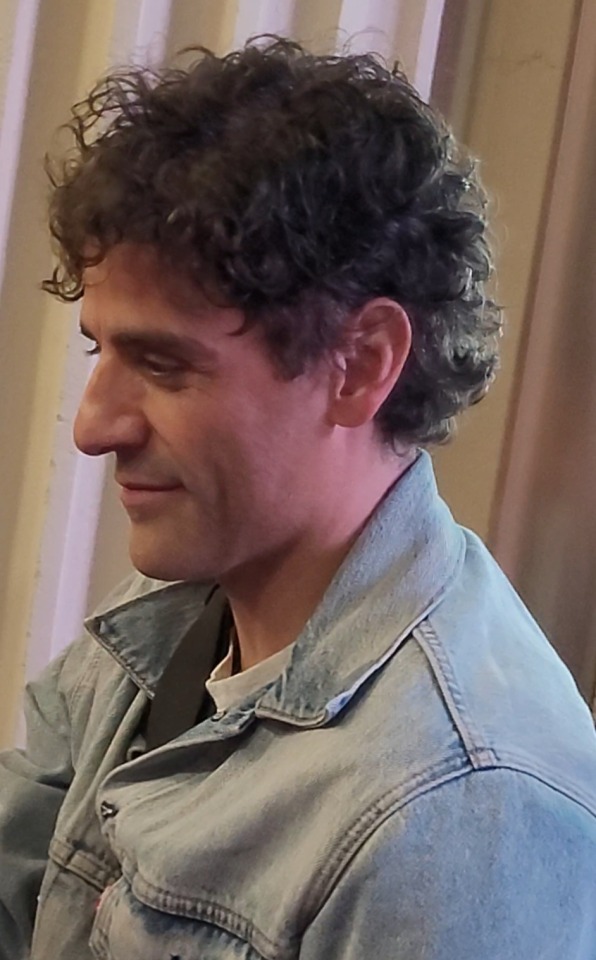
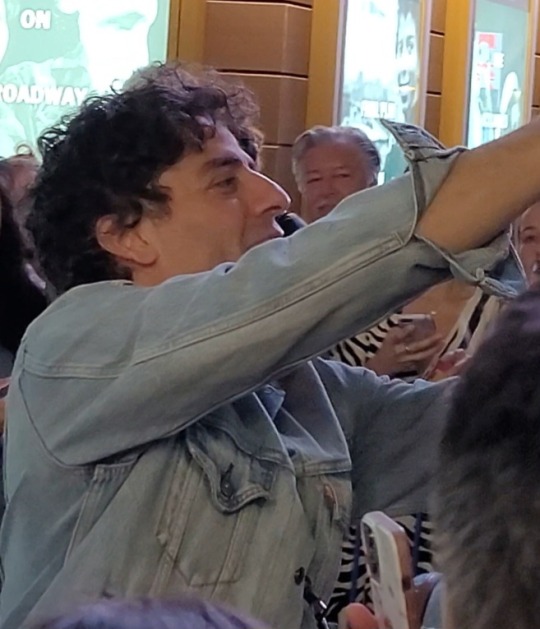
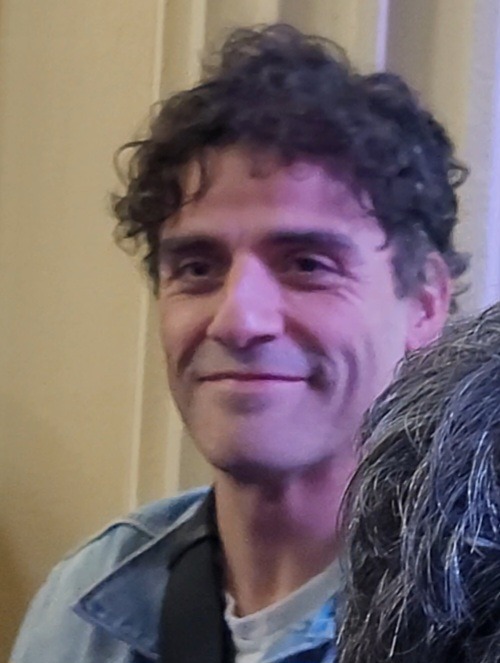
Oscar being the sweetest and cutest at stage door (part two)
#oscar isaac#the sign in sidney brustein’s window#som#I was like three rows from the barriers and kind of tried to film over everybody else's head 😆#But I was so lucky to see the curls in real life this close 🥺#And he really did his best trying to sign everything that people shoved in front of his face and taking pictures with everyone who asked#While being so sweet and apologizing that he wasn't able to get to everyone#And he really is so smol and it was so fricking cute how he tried to reach up to sign everything 🥺#The Steven and Poe energy is still killing me 🥺
368 notes
·
View notes
Text

Filmmaker Edward Berger speaks to Deadline on his upcoming project "The Barrier", starring Austin Butler 😊
23 notes
·
View notes
Text
For animation books that have been out of print for decades, these ones I found online recently are in pretty good condition (and reasonably priced).






#used to check these books out a lot from my local library growing up#so i’m glad that i now have personal copies#disney’s aladdin: the making of an animated film#enchanted drawings: the history of animation#hollywood cartoons: american animation in its golden age#animation books#animation history#aladdin#disney#behind the scenes#superman#the flintstones#mighty mouse#beauty and the beast#bugs bunny#daffy duck#looney tunes#the simpsons#batman the animated series#rocky and bullwinkle#popeye#tom and jerry#oswald the lucky rabbit#john culhane#charles solomon#michael barrier
31 notes
·
View notes
Text
y’all i can’t with this scene i’m crying
“Hello?”
“Baby.”
“Alex! Are you alright?”
“I’m hanging in there. Are you okay?”
“No. No, I am not okay.”
“You know what? I’m coming to London tonight. Just hold on until I get there.”
“Hurry. Please.”
“I’ll break the sound barrier for you.”
are. you. kidding. me? ILL BREAK THE SOUND BARRIER FOR YOU??!?!? *sobs*
#red white and royal blue#rwrb film#rwrb#prince henry rwrb#henry fox mountchristen windsor#henry rwrb#alex claremont diaz#alex and henry#alex x henry#IM NOT OKAY#AAAA#ILL BREAK THE SOUND BARRIER FOR YOU?!#brb sobbing#it’s so sweet#also him calling Henry baby#i fainted
105 notes
·
View notes
Text
as bittersweet the relationship between nora and hae sung was, the most heartbreaking line in the film to me was when arthur talked to nora about how he could never truly understand an aspect of her, especially one that was so important. "you dream in a language that i can't understand," i love you but there will always be a part of you i will never meet, a side of you that remains as a stranger.
#past lives#past lives a24#celine song#greta lee#a24 films#films#cinephile#language#language barrier#missed connections#right person wrong time
55 notes
·
View notes
Text



Jerzy Skolimowski - Barrier (1966)
167 notes
·
View notes
Text
As a young woman who is both deaf and an amputee, Alaqua Cox would seem to be an unlikely choice to star in a Marvel Cinematic Universe series. But she made a huge impression playing the role of Maya Lopez -- a.k.a. Echo -- on Hawkeye, and she was given a spinoff series, Echo. And her co-star on the show, Vincent D'Onofrio, said she's one of the most incredible actors he's ever worked with.
Echo is currently streaming on Disney+.
#Alaqua Cox#Maya Lopez#Echo#MCU#Marvel#Disability Representation#Deaf Representation#Amputee Representation#Diversity in Media#Inclusion in Action#Women in Film#Breaking Barriers#Vincent D'Onofrio#Hawkeye#Spinoff Series#Incredible Actors
27 notes
·
View notes